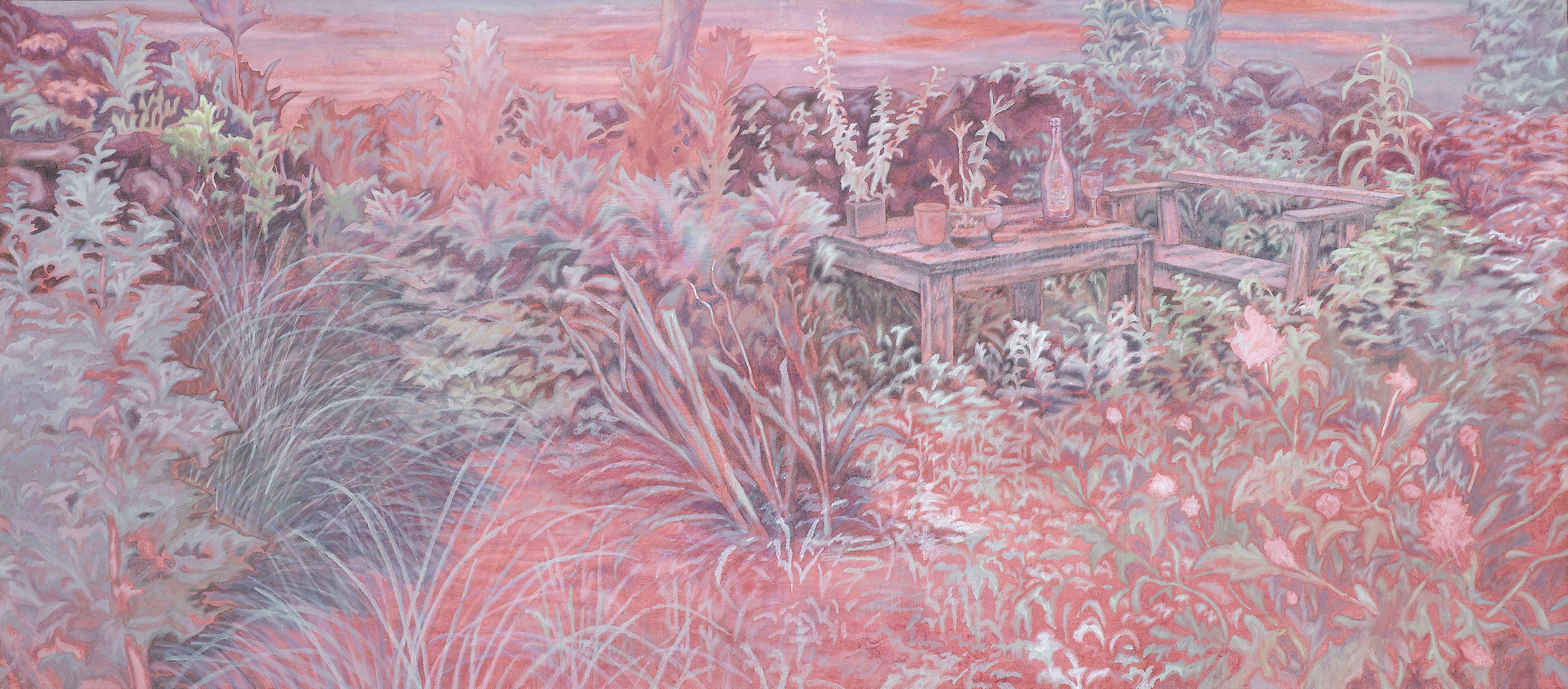Suprematist Space
| [GALLERIES] Tang Contemporary Art
2022. 10. 15 – 11. 19
차이 레이

“공간”은 차이레이의 작품세계에서 가장 중요한 주제이다. 공간은 조각 자체의 매력이자 작가의 개념적 사고의 증거이며, 동시에 개인적인 감정과 현실이 최종적으로 담기는 그릇이기도 하다.
차이레이의 작업에서 가장 중요한 작품 언어로 쓰이는 “원근법”을 통해 작가는 공간에 다양한 형태와 인식을 부여한다. 그는 시간과 공간의 관계를 끊임없이 압축하고, 접고, 늘리고, 끌어당겨서 보는 사람의 시선을 끌어낸다. 하지만 작가가 주목하는 것은 “원근” 그 자체나 예술에서 흔히 볼 수 있는 “원근”에 대한 언어적유희가 아니라 “원근감”이 만들어내는 인식, 거리, 시선이 만들어 내는 정서적 변화에 집중한다.

차이레이의 작품은 “형식주의(Formism)”의 단순한 발전이라고 할 수 없다. 작품에서 시각적으로 보이는 공간의 깊이, 원근법의 축소, 장소의 형태는 작가의 삶과 경험에서 나온다. 이는 시대의 사람들의 경험에서 비롯되어 모든 공간과 시대에 걸쳐 경험할 수 있다. 작품은 감상자에게 1980년대 어느 날 마당에서의 생활, 오후 3시의 햇살, 유년 시절 지냈던 작은 타일로 덮인 부엌, 카프카의 소설 속에 나오는 방의 한 구석, 동유럽 영화에 나오는 좁고 평평한 복도를 무의식적으로 상기시킨다. 차이 레이의 작품을 감상할 때, 우리는 무의식적으로 공간에 대한 과거의 기억을 떠 올릴 것이다. 이 순간 감상자는 과거의 기억이 작품과 완전히 연결되며, 과거에 경험했던 공간, 원근법 그리고 질감을 기억의 깊은 곳에서 회상한다.
차이레이가 절대주의(Suprematism), 미니멀리즘(Minimalism)의 형태를 단순화 시킨 것은 여백과 기하학적 창조를 통해 신비로움을 보여주기 위함이 아니다. 작가는 공간, 원근법, 소재의 표현 등을 다양한 언어의 도구로 사용하며 현실을 재정의하고 창조한다. 이를 통해 작가는 ‘추상적’ 기법을 만드는 것이 심리와 느낌에 가까운 리얼리즘(Realism)으로 변모시킨다. ‘현실’과 ‘경험’에서 출발해 결국 모든 것을 초월한 최고의 감정(Suprematist emotion)이 된다. 이 감정은 가장 높은 형태일 뿐만 아니라 가장 높은 정신이다. 모더니즘 이후형태의 부절을 초월하는 이 형태는 형태의 오랜 역사를 부정하는 것이다.

시간에는 항상 질감이 있고, 공간의 질감 역시 시간에서 비롯된다. 이 시간은 길 수도 있고 짧을 수도 있다. 만약 우리가 순간의 현실을 하루에 담는다면 현실은 우리의 모든 공간을 압도할 만큼 강해질 것이다. 반면 현실을 10년에 담는다면, 그 순간의 현실은 기억의 흐름에 불과하며 지극히 짧은 시간처럼 느껴질 것이다. 다시 현실을 천 년에 담는다면, 모든 것은 그저 미물의 덧없는 순간에 불과하다. 차이 레이의 작품에서 특정 순간에 대한 관점, 그리고 시간의 풍화에 의해 만들어진 질감은 관람자로 하여금 시간과의 거리에 몰입하게 하며 작품 속 단순한 공간, 흐르는 금빛을 통해 공동 기억을 상기시킨다. 하지만 동시에 끊임없이 밀어내어 마치 완전히 다른 세상에 있는 것처럼 느끼게 한다. 이 과정에서 관람자는 자신을 응시하고 자신과 만나게 된다.
하루의 다른 시간의 빛이 공간에 닿으며 이야기와 장면을 제거함에 따라 Cai Lei 작업에서 ‘공간’과 ‘시간’이드러난다. 비록 이 과정에는 고독이 스며들어 있지만, 빛의 움직임은 작품에서 유일하게 변화하는 흔적이 된다. 변화는 이야기와 비밀을 보여준다. 순수한 공간, 단순화된 리듬 속에서 관람자는 역사의 의미를 더욱 쉽게 이해하며 최고의 감정(Suprematist emotion)은 현실을 초월한 형이상학적 사고의 범주에 넣는다.

차이 레이의 작품에 나타나는 완성되지 않은 집, 철근 콘크리트, 도금의 광택, 양각, 실내 공간, 건축물, 극장,부서진 계단, 남아있는 구조물 그리고 공간의 사회적 특징은 차이레이의 작품 과정 전반에 나타난다. 이는현실의 경험과 연결되어 있다. 이는 우리가 시간을 돌아보는 기억일 수도 있고, 누군가의 비밀스러운 기억일수도 있다. 이러한 다양한 인식이 결국 최고의 언어가 된다. 차원의 축소, 모호성, 장면의 분리, 평방 미터, 단위, 측정 방식을 통해 입체주의(Cubism)의 구조, 절대주의(Suprematism)의 기점, 미니멀리즘(Minimalism)의 표현이 결합된다. 이는 차이 레이의 작품 안에서 완전히 새로운 비례, 질서, 구조로 재구성된다. 그리고 마지막으로, 경험에서 출발한 절대공간(Suprematist Space)에 도달하기 위한 계단을 오른다.
Tang Contemporary Art
서울시 강남구 압구정로 75길 6
02-3445-8889
WEB INSTAGRAM Facebook Youtube Artsy











